Forestry & Environmental Recycling
- August 20, 2024
- 0 comment
In a world increasingly conscious of environmental sustainability, the synergy between forestry and recycling emerges as a pivotal force in preserving our planet. Forestry, with its vital role in maintaining ecological balance and supporting biodiversity, intersects with recycling efforts to create a sustainable loop of resource management. By integrating responsible forest management with innovative recycling practices, we not only safeguard our natural resources but also reduce waste and promote a healthier environment.
The Intersection of Forestry and Environmental Recycling
Overview of Forestry
Forestry refers to the science and practice of managing forests and woodlands to ensure their health, productivity, and sustainability. It plays a critical role in maintaining ecological balance by conserving biodiversity, regulating climate, and supporting various ecosystem services. Forests act as vital habitats for a myriad of plant and animal species, contributing to biodiversity conservation. They also serve as carbon sinks, absorbing and storing carbon dioxide from the atmosphere, which helps mitigate the effects of climate change. Furthermore, forests regulate water cycles by influencing rainfall patterns, reducing soil erosion, and maintaining water quality in rivers and lakes.
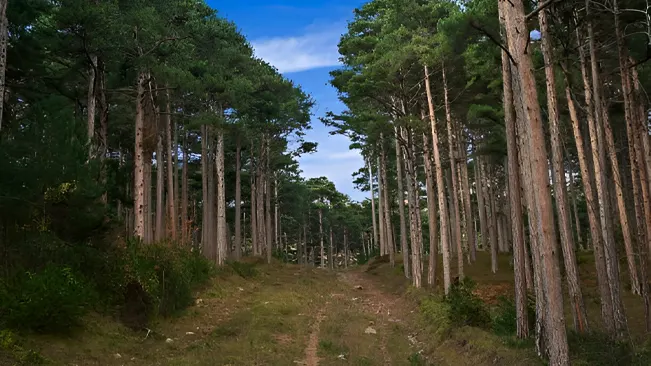
Forests provide essential resources and services beyond their ecological benefits. They supply timber, fuel, and non-timber forest products, which are crucial for many communities’ livelihoods. Proper forest management ensures the sustainable use of these resources while preserving the forest’s health and functions. By maintaining a balanced ecosystem, forests support not only the environment but also the economic and social well-being of people who depend on them.
Overview of Environmental Recycling
Environmental recycling is the process of collecting, processing, and reusing materials that would otherwise be discarded as waste. The primary goal of recycling is to reduce the consumption of raw materials, decrease energy usage, and minimize environmental pollution. Recycling involves several steps, including sorting and cleaning materials, breaking them down into raw materials, and manufacturing new products from these recycled materials. This process helps divert waste from landfills and reduces the environmental impact associated with waste disposal.

Commonly recycled materials include paper, plastics, metals, and organic waste. Paper recycling helps reduce the demand for virgin wood, thereby lessening deforestation and conserving forest resources. Plastics and metals are often recycled to reduce the need for mining and processing new raw materials, which can be energy-intensive and harmful to the environment. Organic waste, such as food scraps and yard trimmings, is composted to create nutrient-rich soil amendments, supporting sustainable agriculture and reducing landfill waste. By integrating recycling practices, we can reduce the environmental footprint of waste production and support a more sustainable and circular economy.
The Role of Recycling in Sustainable Forestry
Recycling Paper and Its Impact on Forests
Recycling paper is a significant factor in reducing deforestation and conserving forest resources. When paper is recycled, it lessens the need for virgin wood pulp, which is typically sourced from trees harvested from forests. By reprocessing used paper into new products, the demand for raw timber is reduced, helping to prevent deforestation and forest degradation. This process not only conserves trees but also minimizes the environmental impact associated with logging and processing new wood.
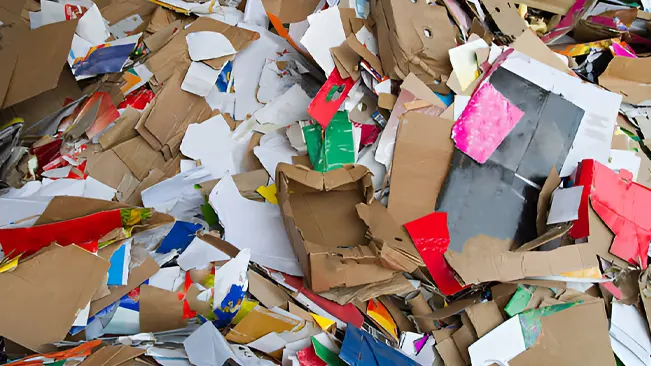
Several case studies highlight the effectiveness of paper recycling programs in achieving these environmental benefits. For instance, countries like Sweden and Japan have implemented robust paper recycling systems that achieve high recycling rates and significantly reduce their reliance on virgin paper. In Sweden, more than 80% of paper is recycled, leading to a substantial decrease in deforestation and sustainable forest management practices. Similarly, Japan’s extensive recycling infrastructure and public awareness campaigns have resulted in a high rate of paper recycling, contributing to forest conservation efforts and reducing environmental impact.
Recycled Wood Products
Recycled wood products are increasingly used in construction, manufacturing, and other industries, offering a sustainable alternative to virgin timber. Recycled wood, which includes materials like wood chips, sawdust, and reclaimed lumber, is repurposed for various applications such as building materials, furniture, and composite products. This practice not only extends the lifecycle of wood resources but also reduces the need for new logging, which can lead to habitat destruction and biodiversity loss.

The benefits of using recycled wood are manifold. By utilizing recycled wood, the demand for new timber is decreased, thereby reducing logging activities and preserving forest ecosystems. Additionally, recycling wood helps minimize waste by diverting wood products from landfills, where they would contribute to methane emissions and other environmental issues. Recycled wood also typically has a lower carbon footprint compared to new wood, as it requires less energy and resources to process. This approach supports sustainable forestry by promoting the efficient use of existing resources and minimizing environmental impacts.
Machinery for Forestry & Environmental Recycling
Horizontal Grinders
Horizontal grinders are essential machines in the forestry and recycling industries, designed to process large volumes of wood and organic waste efficiently. These grinders operate by feeding material horizontally into a large, rotating drum equipped with sharp blades that shred the wood into smaller, manageable pieces. They are ideal for processing tree stumps, brush, and other woody debris into mulch or compost, making them a crucial component for land clearing and waste management.

One of the main advantages of horizontal grinders is their ability to handle tough and diverse materials with high throughput. Their design allows for consistent and uniform output, which is beneficial for producing high-quality wood chips and other recycled products. However, these machines require regular maintenance and skilled operators to ensure optimal performance and longevity.
Drum & Disc Chippers
Drum and disc chippers are specialized machines used for converting large pieces of wood into chips, which are valuable for various applications, including paper production, biomass energy, and landscaping. Drum chippers feature a large, rotating drum equipped with multiple knives that slice the wood into chips as it is fed into the machine. Disc chippers, on the other hand, use a rotating disc with sharp blades to achieve a similar result. Both types are effective in processing logs, branches, and other woody materials.

Drum chippers are known for their high capacity and efficiency, making them suitable for large-scale operations. Disc chippers, while often smaller, offer versatility and precision in chip size. Choosing between the two depends on the specific needs of the operation, such as the desired chip size and processing volume. Both types play a vital role in the wood processing industry and contribute to the efficient recycling of forest resources.
Chain Flail Debarkers
Chain flail debarkers are used to remove the bark from logs before further processing. They operate using a rotating chain system that strikes the log with flail-like implements, effectively stripping away the bark and exposing the wood underneath. This process is essential for preparing logs for milling or other industrial uses, ensuring that the wood is clean and free of impurities that could affect the quality of the final product.
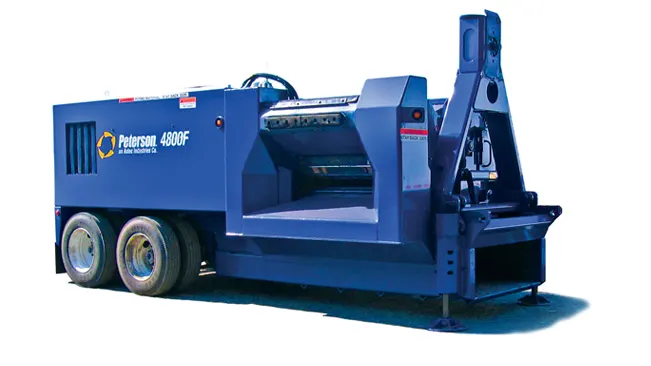
These debarkers are particularly useful in high-throughput environments where large quantities of logs need to be processed quickly. They are known for their ability to handle various log sizes and types, providing a thorough and efficient debarking solution. Regular maintenance is required to keep the chains and flails in optimal condition, ensuring consistent performance and longevity of the equipment.
Blower Trucks & Trailers
Blower trucks and trailers are specialized vehicles used for distributing mulch, wood chips, and other materials across large areas. Equipped with powerful blowers, these units can efficiently spread materials over landscapes, construction sites, and other areas requiring coverage. They are commonly used in landscaping, erosion control, and reclamation projects, providing a practical solution for applying materials in a controlled and uniform manner.
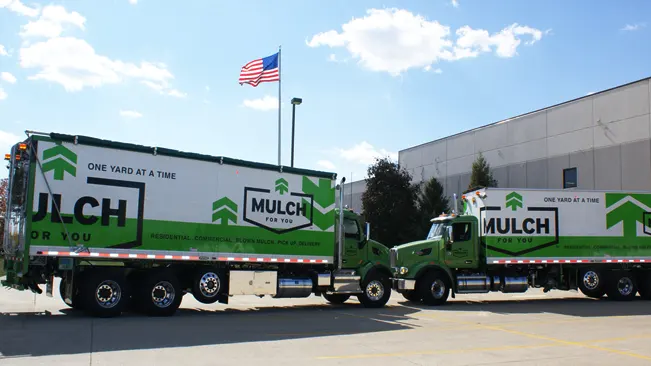
These vehicles are valued for their speed and efficiency, allowing for quick and effective application of materials. Blower trucks typically have a large capacity for holding and transporting material, while trailers can be attached to various types of trucks, offering flexibility in usage. Proper maintenance and calibration of the blower systems are crucial to ensure the desired spread and application of materials, enhancing the overall effectiveness of the equipment.
Conclusion
The intersection of forestry and environmental recycling is essential for advancing sustainability and protecting our planet. Recycling paper and wood helps reduce deforestation and minimizes waste, supporting healthier forest ecosystems. Despite challenges like contamination and cost, innovative solutions and successful global programs demonstrate the potential for effective recycling systems. By enhancing recycling practices and integrating them with forestry efforts, we can significantly reduce our environmental impact and promote a more sustainable future for both forests and communities.
FAQs
- What is the role of forestry in environmental conservation?
Forestry plays a vital role in environmental conservation by maintaining biodiversity, regulating climate, and supporting water cycles. Healthy forests provide habitat for wildlife, act as carbon sinks to mitigate climate change, and help control soil erosion and water quality. - How does recycling paper benefit forests?
Recycling paper reduces the need for virgin wood, which helps to decrease deforestation. By processing used paper into new products, we conserve trees and reduce the environmental impact associated with logging and forest degradation. - What are the main challenges in recycling forest products?
Challenges include contamination of recyclable materials, high costs of recycling processes, and logistical issues related to collection and transportation. Additionally, market fluctuations can affect the profitability and effectiveness of recycling programs. - What are some effective solutions to overcome recycling challenges?
Effective solutions include improving sorting and cleaning processes to reduce contamination, optimizing collection and transportation systems to lower costs, and investing in advanced recycling technologies. Public awareness and robust policies also play a crucial role in enhancing recycling efforts. - How can recycled wood products be used?
Recycled wood products can be used in various applications such as construction materials, furniture, and composite products. Using recycled wood helps reduce the demand for new timber, minimizes waste, and lowers the carbon footprint associated with producing new wood products. - Are there successful examples of recycling programs?
Yes, countries like Sweden and Japan have implemented highly successful recycling programs. For instance, Sweden recycles over 80% of its paper, while Japan has a comprehensive recycling infrastructure that significantly reduces its environmental impact. - How can individuals contribute to forestry and recycling efforts?
Individuals can contribute by practicing proper recycling habits, reducing waste, and supporting products made from recycled materials. Additionally, advocating for sustainable forestry practices and participating in community conservation initiatives can help promote a healthier environment. - What is the future outlook for forestry and environmental recycling?
The future outlook for forestry and environmental recycling is promising, with ongoing advancements in technology and increasing awareness about sustainability. Continued innovation and collaboration will enhance recycling practices and support sustainable forest management, leading to a more sustainable and resilient environment.

Joel Cunningham
Forestry AuthorI'm Joel Cunningham, an expert in pruning and weed management with over a decade of experience. My skills are rooted in formal training and extensive practice, focusing on advanced pruning techniques and efficient weed control. I'm known for my quality work, precision, and deep understanding of plant health and soil dynamics. My contributions extend to educational initiatives where I share sustainable practices and advice, establishing myself as a reliable and authoritative figure in the gardening community.


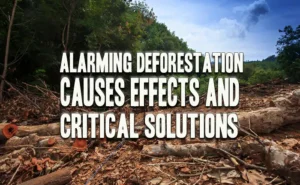



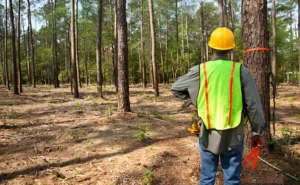



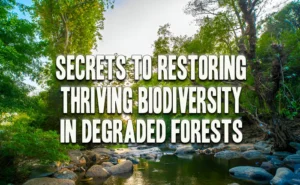
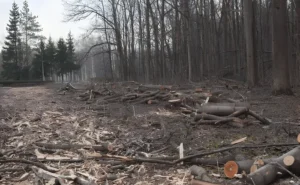
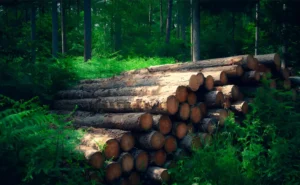
Leave your comment